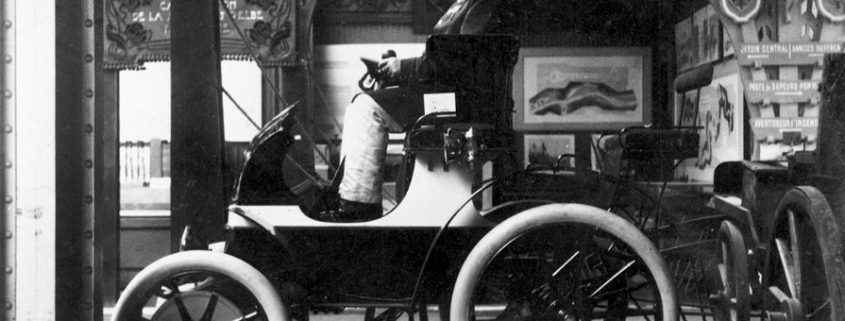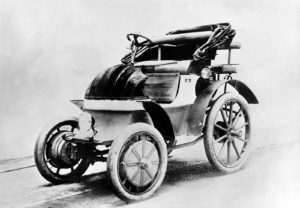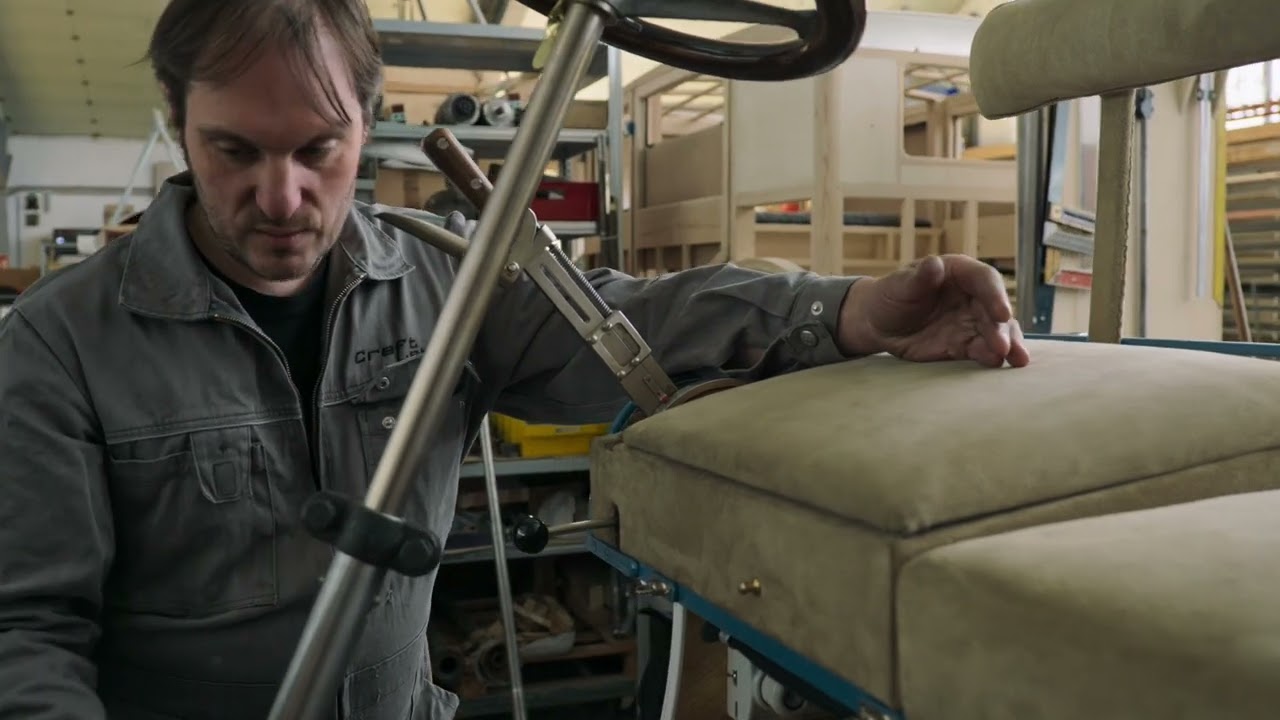The first Porsche was electric – the 1900 Lohner Porsche
Ferdinand Porsche was not only a brilliant design engineer but also, first and foremost, a pioneer with foresight. He built his first zero emission vehicle for his boss at the time, Bela Egger of the electrical engineering company VEAG, already in 1896 – an electrically powered carriage assigned by Ludwig Lohner. The vehicle was named Egger-Lohner and Porsche played a considerable role in its development.
As all petrol engine manufacturers in Europe were either unable or reluctant to supply, Ludwig Lohner of the company k.u.k. Hof-Wagen-Fabrik Jacob Lohner decided to take his own path in 1898 with the construction of electric vehicles. There was also a decline in carriage building at the end of the 19th century and the young engineer recognised that the future belonged to motor vehicles. A further reason for the development of electric drives and particularly topical today, was the air and noise pollution caused by loud combustion engines.
Elektromobile « System Lohner Porsche »
In 1899 Ferdinand Porsche left VEAG to join k.u.k. Hof-Wagen-Fabrik Jacob Lohner where he developed the electromobile “System Lohner-Porsche”. The electric vehicle was first presented at the Paris World Exposition in 1900. The automobile world looked on in amazement!
The Lohner Porsche was constructed in a very similar way to the carriage by Lohner with typically large rear wheels and wooden spokes. It had a vehicle body out of wood with a large top out of black varnished leather to protect drivers from the rain and was powered by two wheel hub motors in the front wheels. These electric wheel hub motors already went into production in Lohner’s workshops in the Donaufelderstraße in Vienna, in 1990, when the world exhibition in Paris opened.
The internal pole electric engines built into the hubs had an output of 2.5 hp each. The wheel hub motor in the front wheels was the first patent registered on the Porsche & Lohner name. The vehicle reached a maximum speed of up to 40 km/hr.
Due to the heavy weight of the 42-cell lead accumulators as well as the wheel hub motors the electric drive found it hard to assert itself on the automobile market. Furthermore, the maintenance as well as the charging of the batteries was difficult, and the vehicles were expensive with sales slow to take off. In 1900, Lohner only sold five electric cars and eleven in the following year.
Replica of the Lohner Porsche 1899
The Replica of the Lohne-Porsche 1899 is on display in the entrance area of the oldtimer exhibition at fahr(T)raum Mattsee near Salzburg. The Lohner Porsche 1899 is also available as model car on a scale of 1:18 and 1:43 in the fahr(T)raum oldtimer museum and online shop.
Blog post: The world´s first four-wheel drive car was a Porsche
Blog post: Lohner-Porsche Mixte 1901
Sources
Ludvigsen, Karl (2010): Ferdinand Porsche – Genesis eines Genies
Porsche Museum präsentiert historisches Hybridautomobil aus dem Jahr 1900
Die Geschichte von Porsche beginnt elektrisch
Der Erfinder des elektrischen Radnabenmotors
Bildnachweis
Porsche AG
Fahrtraum GmbH
This might also interest you:









The first traffic rules – displacement and adaptation caused by the automobile
/dans Geschichte, Non classifié(e)Around 1900, as was the case for millennia, the horse still dominated in the transport of people and loads. Only the utmost upper class could afford private cars. In 1914, people were already crying « Vienna is choking with traffic », although at that time there were only about 4,000 cars in Austria´s capital. Today, in Vienna […]
3. Classic motorcycle special exhibition – sidecars from 1926
/dans Geschichte, Non classifié(e), Sonderausstellung, Sonstige FahrzeugeFor the third year running, the classic motorcycle special exhibition will kick off at fahr(T)raum Mattsee from 1 October – this year under the title « Right or Left …. around the world ». A total of 15 historic motorcycle and sidecar rigs from 1925-1960 are on display including, inter alia, a Royal Enfield 1000 with sports […]
A Porsche tractor for Brazil – the P 312
/dans Geschichte, Non classifié(e), TraktorenFerdinand Porsche not only designed sports cars, he also played a significant role in the mechanisation of agriculture. This included the development of the « Volksschlepper » (“People´s Tractor”) from 1944 and its further developments resulting in the universally applicable AP-17 (« System Porsche ») tractor built by the Allgaier company. Particularly memorable is the bright orange P 312 […]